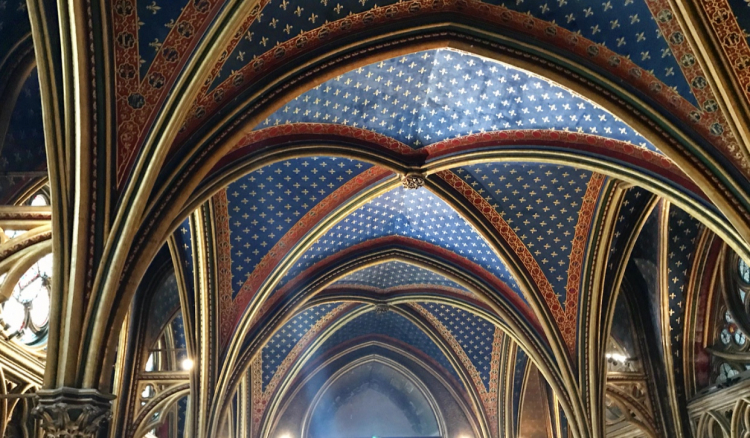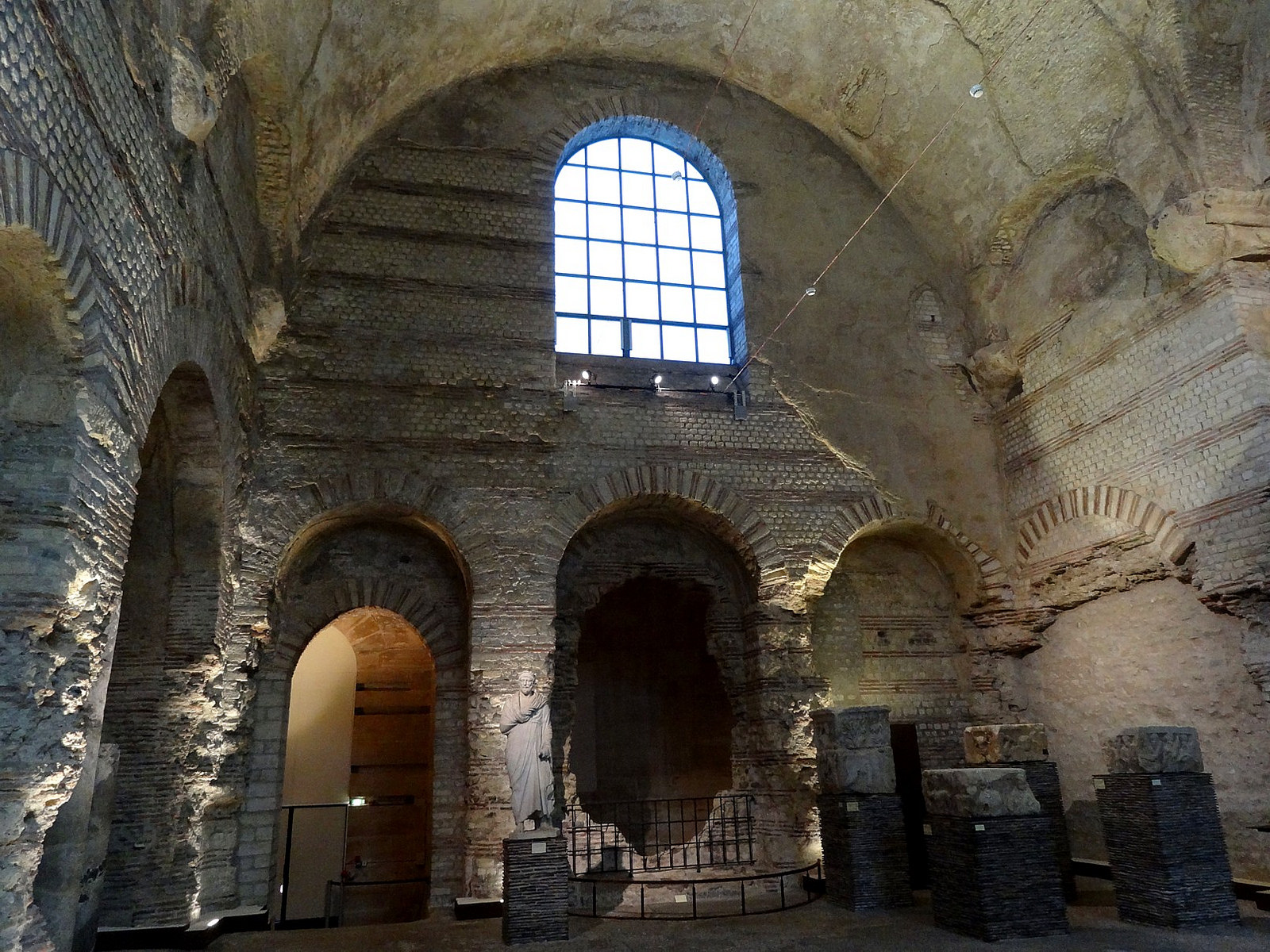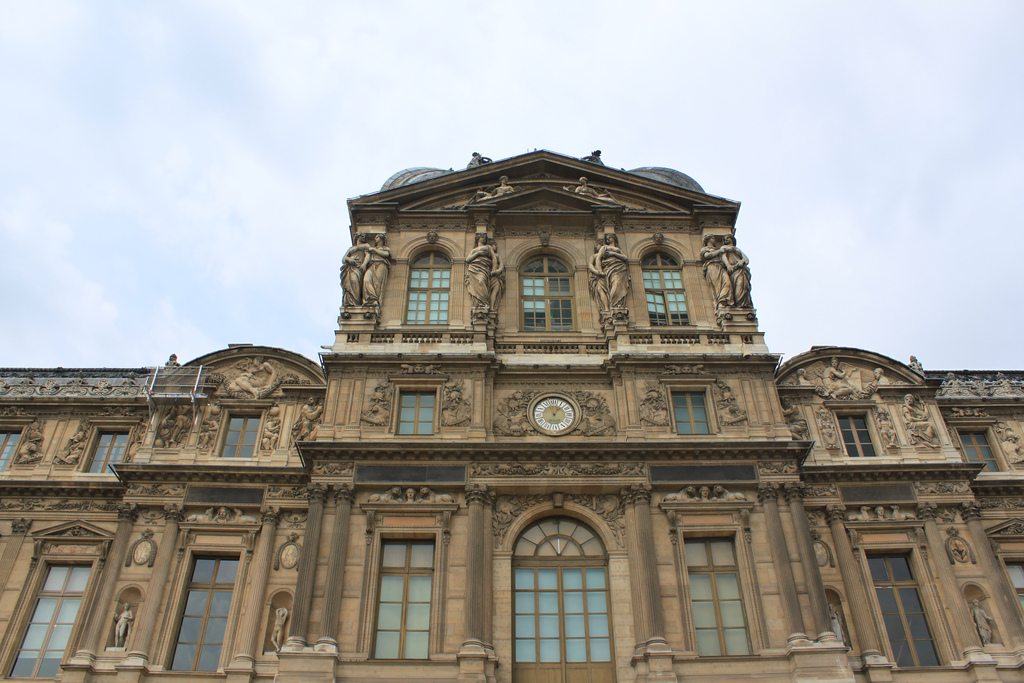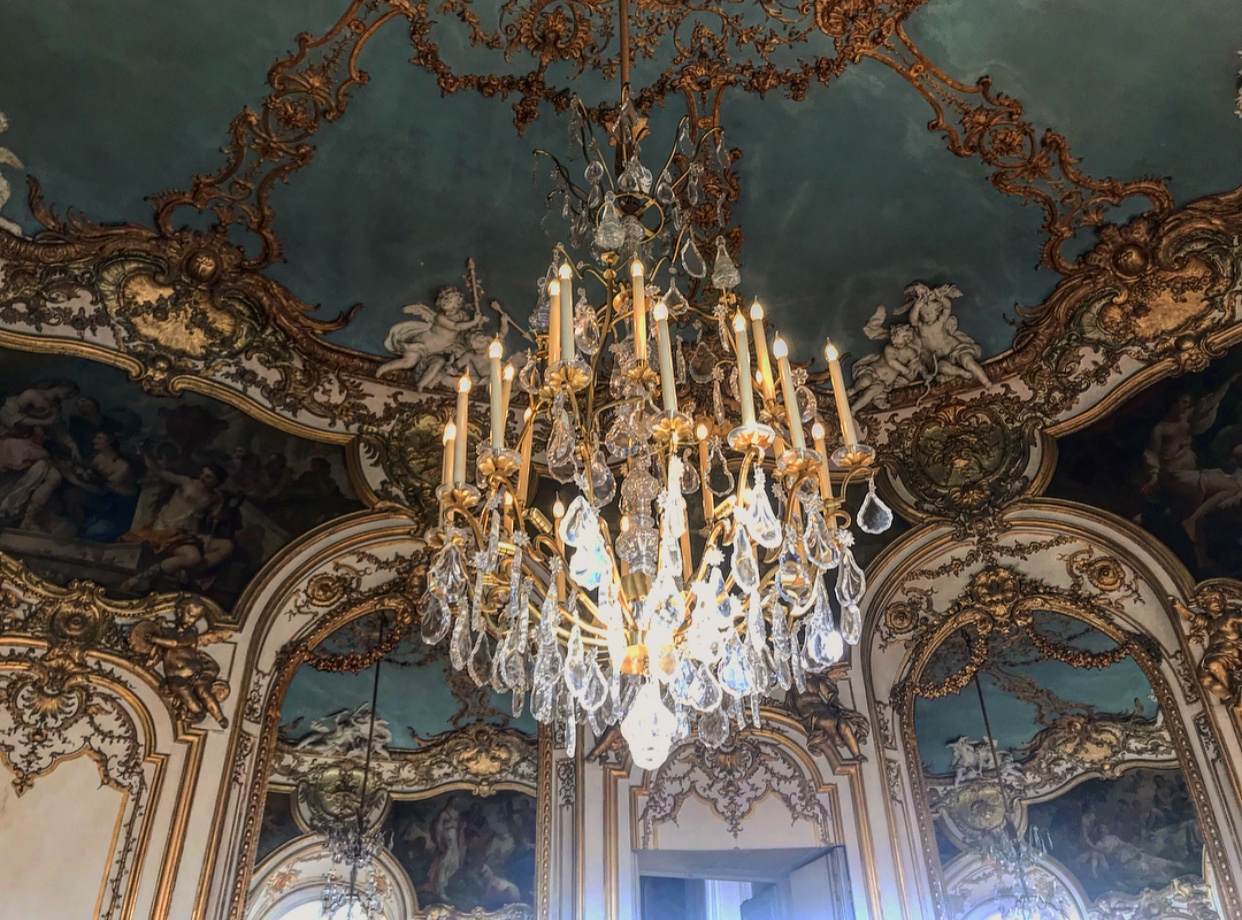Paris Pre-Haussmann

Architecture in the Parisian streets has been developing since before Paris was even "Paris." This beautiful city used to be a marsh in 100C.E. Now it is one of the world's most visited cities. A big part as to why Paris is a constant tourist hub is because of its architecture. Many tourists, as well as Parisians, only know the typical, fancy looking buildings that fall under the category of Haussmann architecture.
The timeline of the most remarkable phases of Paris starts off with Roman Lutetian architecture, Lutetia being the name of ancient Paris. During the early first century up until the third century, Paris was built on Île de la Cité, which is now the center of the city. In this period, Parisian architecture consisted of numerous characteristics, such as massive masonry, Opus Mixtum (design of red lines in the bottom picture), small windows, rounded vaults within the ceiling and rounded arches. The most famous buildings that mark this period as the architecture of Roman Lutetia are the Forum of Lutetia, the Arena Amphitheatre and the Baths of Cluny. These baths are still in Paris to this date, so if the curiosity awakens of what this type of architecture may look like, then this is a great opportunity to see the roots of Parisian architecture.
Baths of Cluny, Paris. Photo: Flickr/ΩmégaAfter various invasions of the Île de la Cité, the Roman Empire was able to establish themselves for this new phase of architecture from the fourth century until the 15th century. However, within the Roman Empire, numerous dynasties existed: the Merovingian Dynasty, Carolingian Dynasty and the Capetian Dynasty, which all brought significant changes to the Parisian architecture. Within the Roman Empire, there was an importance placed on using the Roman ways of architecture, and the dynasties, therefore, looked to them for guidance. The Merovingian Dynasty, which lasted from the fifth century to the eighth century, focused on building churches and monasteries. They used marble walls and columns, mosaic fragments and Roman buildings as their "style guide" for their construction.
The Carolingian Dynasty, dating from the ninth century to the 10th, consisted of volumetrically massive masonry, opulent ornaments, basilical forms with crossings and Romanesque influenced architecture. The Capetian Dynasty, which was around close to the end of the Roman Empire, introduced Gothic Architecture. This new type of architecture is of great importance and is also known as French architecture. Gothic Architecture consisted of three eras: Early Gothic, Rayonnant and Flamboyant. The change of architectural characteristics of the analogical thinking included flying buttresses, stained glass, rib vaults and the reduction of walls. Some well-known buildings made in this style are the Abbey of Saint-Denis and the Cathedral of Notre Dame.
Notre Dame Cathedral. Image credit: Katherin LopezFrom the 15th century up until the 17th century, known as the Renaissance Period, the French decided that the Gothic Architecture lacked the formality that can be found in Italian societies. There was a need for change, which included a return of the classical orders. In addition to that, the Tuscan, Doric, Ionic, Corinthian and Composite orders were all included in the new Parisian architecture. It now consisted of harmonized and geometric proportions. A large part of the courtyard of the Louvre, as well as the palace of the Louvre, are designed in this architectural style.
Section of the Louvre's Courtyard. Image Credit: Flickr/keith.bellvay
When copying doesn't qualify as original anymore and you are Louis XIV, King of France, you can create your own type of architecture. French Classicism, which was created during the 17th century, tries to treat all that it includes as part of a whole. This architecture was a mix of French and Italian architecture but had a different rationality to it, as well as optical effects to it. During this period, any buildings made were addressed to the crown. King Louis XIV created the Academy of Architecture in Paris, where he influenced the way architecture was made, which included double columns. A great example of this style of architecture is the East Facade of the Louvre.
When Louis XIV's reign ends, a new phase of architecture is born. Rococo Architecture, which is considered a phase of the Baroque period, is one of the most creative types of architecture known in Paris. It is known for the experience it gives to the senses when observed. Much of this architecture was influenced by the English, where architecture demonstrates a use of moods within rooms, ornaments and personalities. Rococo architecture was also known for its complexity, ornaments and the lack of rules to the style. It is difficult to duplicate, which in turn made it near to impossible to replicate by future architects. A Parisian example of Rococo architecture, dating from the 18th century, is Hotel de Soubise.
Oval room of Hotel Soubise. Image credit: Katherin LopezNeoclassicist architecture, during the Enlightenment period in the early 18th century and late 19th century, became the main focus of architectural vision, where reason and the utility of buildings were more important than its aspects. The construction of buildings now included the question of cultural and social benefits. The construction material itself also held high importance. During this period, architects made sure not to emulate ancient architecture, but instead focus on architectural functions. This became a big breakthrough within Parisian architecture due to the use of new materials, the incorporation of new technology and the addition of the engineer's expertise. Examples of this type of architecture are the Odeon Theater and the Pantheon.
Parisian architecture is more than just the well-known Haussmann style. The city's diverse architecture is from its journey through different empires and kingdoms, all of which have formed Paris to how it looks today. Next time you have visitors in Paris, be sure to throw in some of these cool facts about the places you go.











